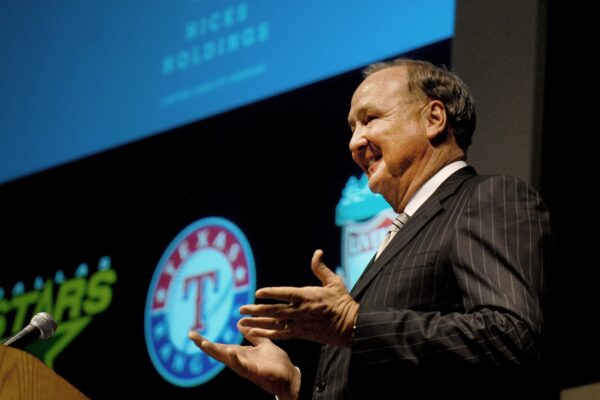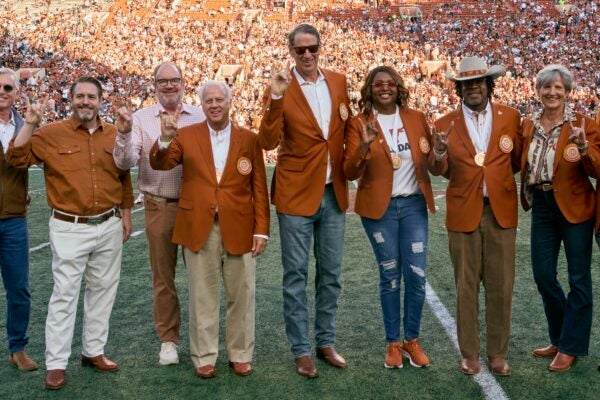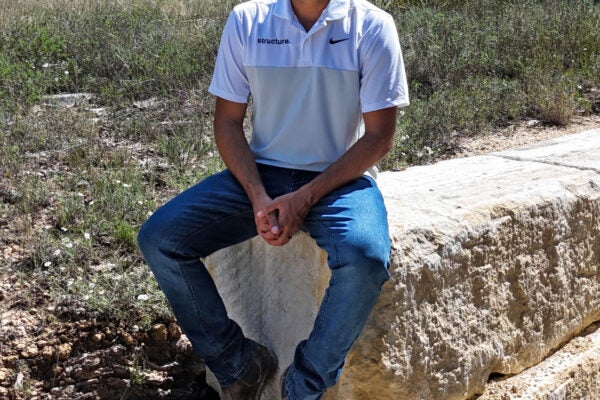Humble Beginnings, High Ideals
UT’s business school is born in a modest setting with a visionary dean

By Jim Nicar
The day was a decade in the making. At noon on Friday, Sept. 29, 1922, nearly 300 students and faculty members gathered for the first-ever meeting of the School of Business at The University of Texas. Although a business department had existed since 1912, the UT Board of Regents officially had promoted it as a separate, stand-alone academic unit on July 12, and this was the first opportunity for the new school community to come together. The school had no permanent home yet, so the group assembled in the auditorium of the Law Building.
Outside was a vibrant university community of 5,000 students, faculty
members, and staffers, housed on the original 40-acre campus in the
middle of Austin, then a city of nearly 40,000 people. The university was
growing faster than its funding allowed, and inexpensive temporary
wooden buildings, each named for a letter of the alphabet, were seen as
the fastest way to meet demand. The shacks were purposely left unpainted
in the hope that the state would find their appearance too embarrassing
and replace them with adequate buildings. One of these simple shacks
served as headquarters for the new business school.
With everyone assembled in the auditorium, University President Robert Vinson spoke of his excitement about the educational possibilities the new business school offered. “The students through their dean should ask for anything they need,” he offered. Spurgeon Bell, the school’s first dean, boasted that were motivated and eager to learn.
For Bell, the meeting must have been highly satisfying. During the preceding 10 years, he had guided a fledgling business program into one of the most successful endeavors on the campus. What today is the McCombs School owes much to Bell, who dreamed of an innovative and first-class business school at the university.
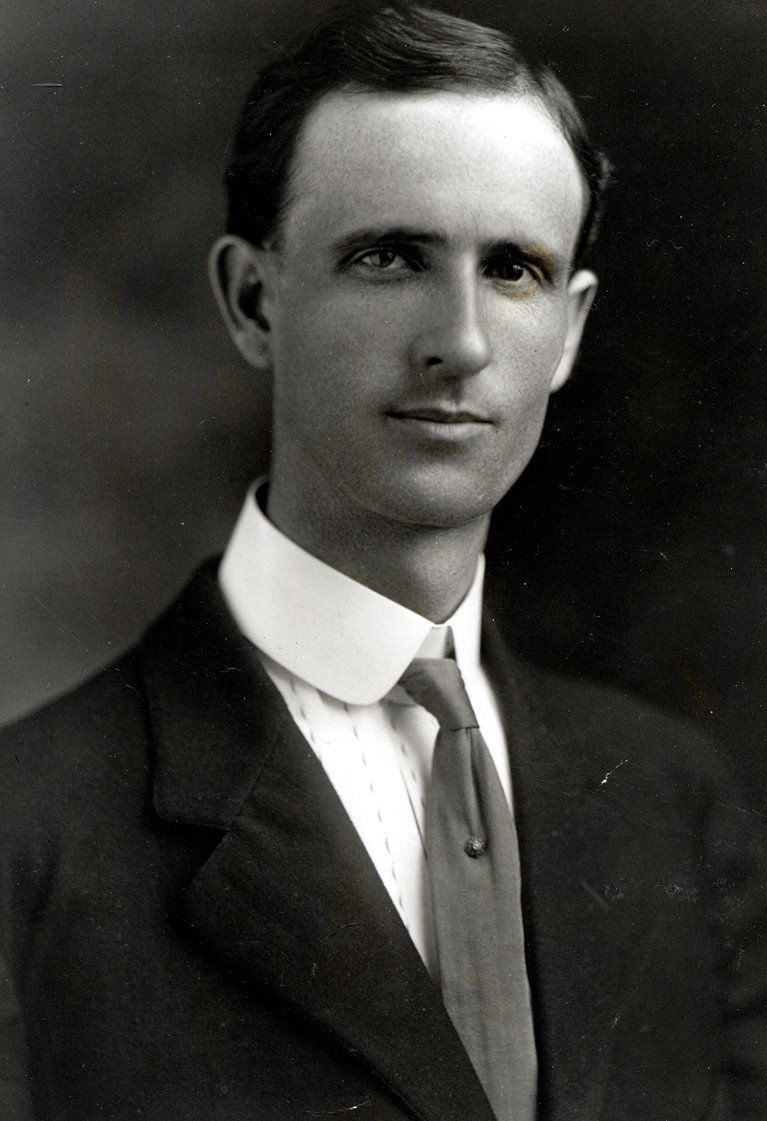
The Beginning
The idea of a UT business school dates back to 1909, when UT President Sidney Mezes proposed it to the Board of Regents. The regents agreed, but the limited finances available required a modest beginning. A sole professor, Spurgeon Bell, was hired in 1912 to found a department of
“business training.” A native of Blanco, Texas, and a 1902 UT graduate in economics and math, Bell had studied and taught at the University of Chicago, served as an assistant editor of The Economist magazine, and was on the faculty of the University of Missouri when he was lured back to Austin with a $3,400 salary.
Initially, Bell taught courses in accounting, banking, corporations, and statistics, though the classroom environment was less than ideal. Business was assigned to G. Hall, a shack placed on the east side of Old Main. On chilly mornings, he arrived early, poked the remaining embers in the potbelly stove, and then gathered fresh wood from behind the building. A leaky roof prompted The Daily Texan to declare G. Hall “unseaworthy” when it rained, “as every small shower subjects the unfortunate students to
a bath.”
In addition, the arrival of business classes drew a mixed response on the Forty Acres. Some professors questioned the idea of business as a legitimate course of study at a four-year university and made their feelings known to Bell.
Despite the challenges, business classes were instantly popular with the students. A second instructor, John Treleven from the University of Wisconsin, was added.
While Bell managed a fledgling academic department and coped with primitive classrooms, he had his own academic problem to resolve. He had attended graduate school at UT and Chicago but had not yet completed an
advanced degree, and he would need one to remain on the faculty.
In spring 1914, the regents approved a yearlong leave of absence at one-third pay so Bell could attend Harvard University and earn a Master of Business Administration degree. Harvard launched its MBA program in 1908, the first in the world, and was still the only university offering it at the time.
Becoming Inspired
That summer, Bell, with his wife and young son, moved to Cambridge, Massachusetts, and settled into an apartment just a block from Harvard Yard. Bell thrived. In a series of letters to new UT President William Battle, some of them 15 hand-written pages, Bell relayed his experiences. The Harvard faculty and fellow students inspired him. He excitedly detailed
plans to offer BBA and MBA degrees in Austin and wanted to recruit business leaders from around Texas as guest lecturers. Bell thought
undergraduate students needed real business experience to complement their coursework, and he pondered topics such as offering a farm
management program to serve the state’s agricultural population.
He traveled by train to New York and met with bankers on Wall Street, toured factories in Philadelphia, and sought out the business faculty at the University of Pennsylvania to discuss courses in real estate. Bell wrote that
the dean of the Harvard Business School “believes that within the next ten years there will arise somewhere in the Southwest a School of Business Administration distinctly better than the average, which will draw students from a number of states. He suggests that the University of Texas should at once lay the foundation for building such a school.”
Bell knew the goal was a lofty one and told Battle in a letter that he feared he might not reach it. He confidentially shared his doubts and also questioned his continued standing with the UT faculty.
“I have a distinct feeling of patriotism and personal obligation to Texas,” wrote Bell, “but if I have impaired my usefulness, or, if [the business program] tends to make me a misfit, I ought to get out of the way.”
At one point, Bell offered to resign and refund his stipend to attend Harvard, “since Texas would not receive a benefit justifying the expenditure.”
Battle was quick to respond. “Do not be uneasy about your work here or the way in which it is regarded by the faculty,” he wrote. “You have, both on the score of character and attainments, the entire respect of the faculty and, of course, mine.”
“I am obliged to you for your reassuring note,” Bell wrote back. “I should regard the failure of the venture at Austin as a misfortune to the University as well as a personal calamity.”
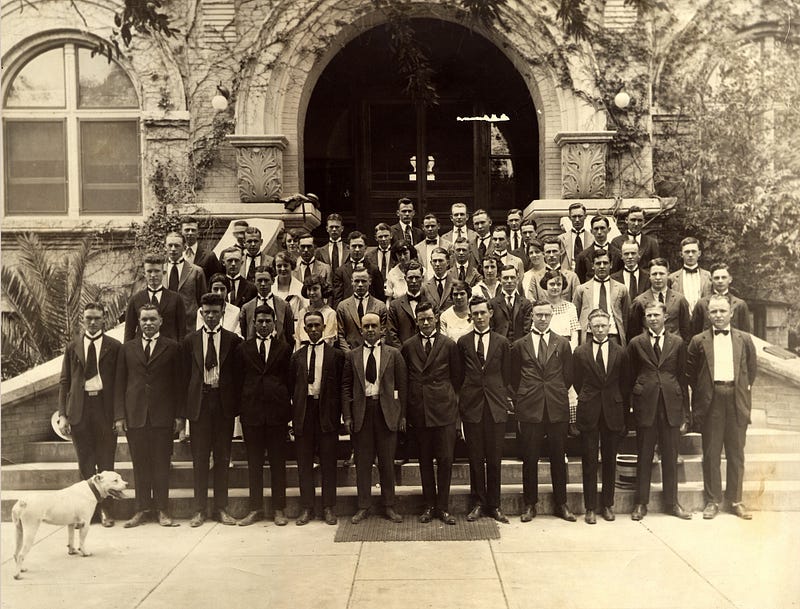
Turning Vision into Reality
Upon his return to Austin, Bell wasted no time executing his ideas. In spring 1916, his plan to offer a BBA degree was approved. Before the end of the year, Texas became a founding member of the Association for the Advancement of Collegiate Schools of Business. On June 1, 1917, the regents authorized an MBA degree, one of the first in the world, joining
the ranks of Harvard, New York University, and Boston University.
By 1919, the business faculty had increased to five, including its first woman. Florence Stullken began a 38-year career teaching typing –
required for all business students — and shorthand. A pair of UT law
professors volunteered to teach business law courses.
The classes were moved to a slightly larger shack, H. Hall, along Guadalupe
Street where Goldsmith Hall now stands. The new digs had a better roof and steam heating, which relieved Bell of wood-gathering duty, but the subpar facility was still a frustration.
“When from time to time official duties take me to the palatial offices of the dean of the College of Arts, the dean of the Law School, and the president of the University, I feel like a poor man come to town,” he groused.
Transformation
With the business program booming, change was afoot. By the 1921–1922 academic year, almost 1,500 students out of UT’s total enrollment of 4,000 were taking business classes, taught by 10 faculty members. Though there were only 227 students majoring in business, the program’s phenomenal growth persuaded then-UT President Robert Vinson to acknowledge that the time had come to create a business school. He recommended that the regents remove the business training department from the College of Arts and Sciences and make it a separate school. The board made it official on July 12, 1922, and Bell was named the school’s first dean.
From the start, Bell and the faculty set high standards for the newly minted School of Business Administration. Enrollment was limited to juniors and seniors. The BBA required six months of business experience under a “coordination” program, similar to an internship today. “Since business institutions cannot be moved bodily into our midst as a laboratory,” Bell explained, “we are sending our students to the laboratory of experience.”
At Bell’s direction, the Commerce Club was founded, bringing business leaders to Austin as guest speakers. Meeting monthly, the club became the largest student group on campus.
In an innovative move, Bell also partnered with the university’s Division of Extension to provide in-person courses in Houston, San Antonio, and Fort Worth. Members of the business faculty regularly made the hourslong
train rides to those cities, especially on weekends, to bring business education to the people across Texas.
Outside of Texas, Bell strived to enhance the school’s reputation. He often spent summers teaching at the universities of Chicago, California, and Washington to gain experience, compare best practices, and meet the local
business community.
Networking with his former Harvard classmates, Bell received requests from New York City banks for recommendations of new Texas graduates. As a few UT alumni found success on Wall Street, their alma mater became more visible.
“The efficiency of the students graduating from the School of Business Administration has been ‘noised abroad,’” declared The Daily Texan, “and the demand for them in the business world seems constantly growing.”
“The efficiency of the students graduating from the School of Business Administration has been ‘noised abroad,’ declared The Daily Texan, “and the demand for them in the business world seems constantly growing.
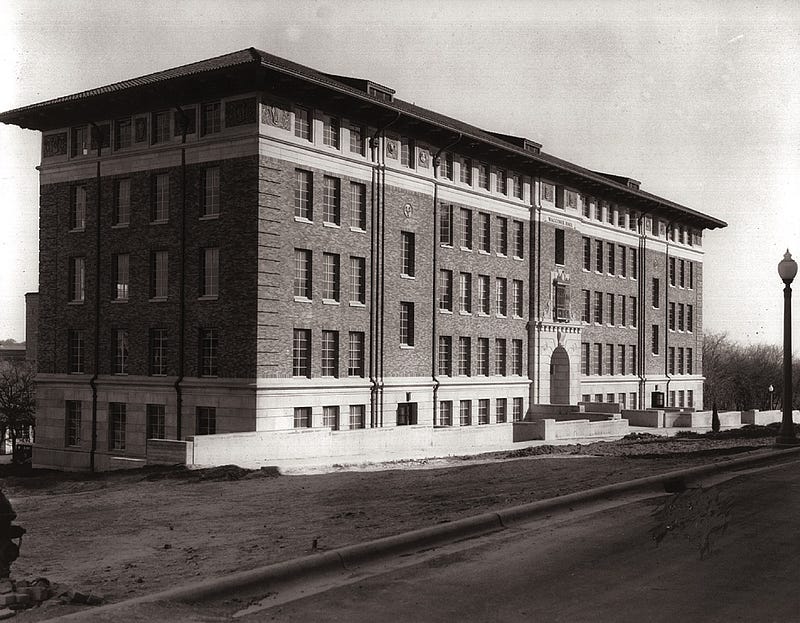
Leaving His Mark
In 1925, Bell was recruited by Ohio State University to lead its new Bureau of Business Research, but not before he had accomplished many of his goals in Austin. “The growth of the school and its broadening sphere of influence is the result of his judgement, foresight, and untiring effort,” wrote Professor Karl McGinnis, who succeeded Bell as dean. Bell’s inventive approach to teaching, collaboration with Texas businesses, and pioneering efforts to take business education statewide have all left an
indelible impression that has helped shape the McCombs School for a century.
Jim Nicar has authored two books about the university, written numerous articles in the Alcalde and other publications, and for decades has conducted historical and the architectural history tours of campus. He maintains the UT History Corner website.
This article appeared in the Centennial 2022 issue of McCombs magazine. Click on the link to see the full issue.
About this Post
Share:
